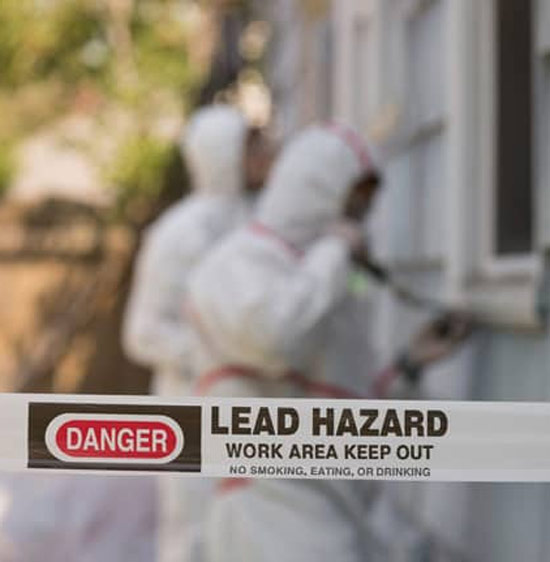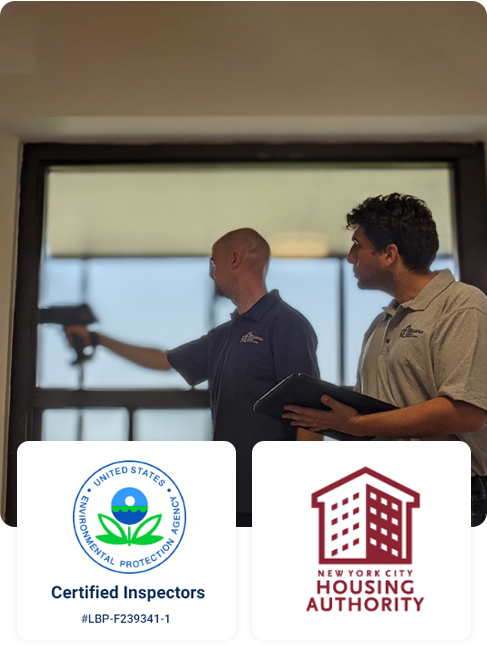Expert Lead Violation Removal in NYC-- Safeguard Against Health Hazards
Finest Practices for Making Certain Safe and Extensive Lead Violation Abatement
Dealing with lead infraction abatement requires a multi-faceted strategy to ensure both safety and conformity. It's the last clearance procedure, including extensive assessments and lab testing, that really confirms a lead-free environment, ensuring lasting safety and security. Exactly how do these techniques interconnect to ensure detailed lead reduction?

Preliminary Assessment
Carrying out an initial analysis is an essential initial step in lead infraction reduction. This phase includes a comprehensive evaluation of the residential property to recognize the presence, extent, and details places of lead-based hazards. Certified experts, such as qualified lead examiners or risk assessors, must perform a comprehensive site assessment, utilizing devices like X-ray fluorescence (XRF) analyzers to accurately find and measure lead focus in paint, dirt, soil, and water.
The analysis should additionally include an evaluation of the structure's history, previous records, and any kind of grievances or wellness issues reported by passengers - Lead Removal Contractors. Recording the findings thoroughly is important, as these records create the basis for developing an efficient reduction approach. A complete analysis also includes tasting and research laboratory analysis, which are vital to validate the visibility of lead and guide subsequent actions
In addition, it is vital to connect the outcomes transparently to all stakeholders, consisting of home proprietors, lessees, and regulatory authorities. By guaranteeing that the preliminary evaluation is performed with accuracy and roughness, specialists can lay a strong structure for a targeted and efficient lead abatement process, ultimately safeguarding public health and guaranteeing compliance with regulative requirements.
Appropriate Containment
Correct containment is essential to avoid the spread of lead contaminants throughout reduction activities. Effectively taking care of containment minimizes the risk of lead dirt and particles migrating to non-work locations, therefore securing both the atmosphere and individuals outside the prompt job zone.

Normal examinations of the containment location are required to check for violations or weaknesses in the obstacle. Any determined issues need to be quickly resolved to preserve the honesty of the containment. By sticking to these practices, reduction projects can successfully control lead contamination and alleviate associated health and wellness threats.
Worker Defense
Guaranteeing employee protection is vital throughout lead abatement jobs to stop work-related direct exposure to dangerous lead bits. Essential procedures consist of using personal safety tools (PPE) such as respirators, gloves, and full-body fits especially designed to block lead dust and fumes. Employees need to undergo detailed training on the proper usage and maintenance of PPE, including in shape screening for respirators to visit this site right here ensure maximum effectiveness.
Design controls, such as neighborhood exhaust air flow systems, are essential in lessening air-borne lead focus in the job environment. Administrative controls ought to likewise be carried out, consisting of restricting the duration of exposure and turning employees to minimize specific direct exposure times. Normal clinical security and organic surveillance are essential for early detection of lead absorption, allowing timely intervention and treatment.
Moreover, establishing a decontamination procedure is crucial. Workers need to comply with rigid decontamination procedures before breaks and at the end of their shift to stop lead dust from being lugged outside the job location. This consists of detailed hand and face cleaning with lead-specific cleaner and altering out of polluted clothes.
Meticulous Cleanup
Maintaining a secure job setting prolongs beyond worker protection and incorporates thorough clean-up to make sure lead bits are thoroughly gotten rid of from the website. The process of precise cleaning is essential in protecting against the recontamination of the mellowed out location and safeguarding both existing and future passengers.
To accomplish a comprehensive cleaning, all workplace need to be methodically decontaminated. This entails the usage of specialized HEPA (High-Efficiency Particulate Air) hoover and wet-wiping strategies to catch and remove great lead dirt that may have resolved on surfaces. It is necessary to clean up all straight surfaces, consisting of floors, window sills, and counter tops, as well as upright surfaces that might have caught lead particles.
Employees must put on proper personal safety equipment (PPE) throughout clean-up to avoid direct exposure to residual lead dirt. Used cleansing materials such as wipes, sponges, and wipe heads must be taken care of according to contaminated materials disposal laws.

Final Clearance
Last clearance is the crucial concluding phase of lead abatement that identifies whether the site is safe for reoccupation. This vital step includes detailed assessment and screening to confirm that all lead dangers have actually been successfully removed.

Last clearance Resources screening not just secures future passengers however likewise makes sure compliance with local, state, and federal laws. It serves as a recorded recognition of the reduction professional's adherence to industry ideal methods. Making sure an extensive and successful last clearance is necessary in securing public health and wellness and promoting rely on the reduction procedure.
Final Thought
Guaranteeing secure and detailed lead infraction abatement necessitates a complex technique including initial analyses with sophisticated discovery techniques, effective control approaches, rigid worker defense procedures, and meticulous cleaning procedures. The final clearance phase, featuring thorough evaluations and research laboratory screening, is crucial to validate compliance with EPA criteria. Adherence to these best methods guarantees a risk-free environment for passengers, minimizes health and wellness threats, and upholds governing demands, therefore promoting public wellness and safety and security in lead-affected areas.